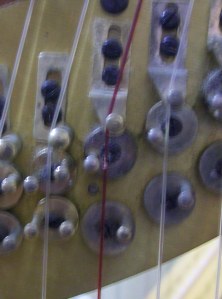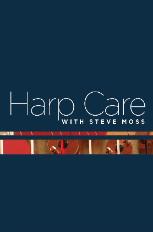 You may have heard that you need to replace your strings before a regulation. Why, you may ask? Do you have to change all of them or only some? You’re hiring a technician. Why can’t he or she do them, for crying out loud? Let’s explore the answers to these questions.
You may have heard that you need to replace your strings before a regulation. Why, you may ask? Do you have to change all of them or only some? You’re hiring a technician. Why can’t he or she do them, for crying out loud? Let’s explore the answers to these questions.
I generally recommend that harpists replace the first and second octave strings on their pedal harps at least two weeks prior to a regulation appointment. The reason for this is that in the upper register of the harp, string condition has a strong bearing on the accuracy of pitch regulation – that is on whether your harp remains in tune when you change pedal positions. In this high register, where the strings are very short, any change in the position of the harp’s nuts and discs will have a noticeable effect on pitch. The more a disc “grips” a string, or pushes it at an angle, when the disc is engaged, the sharper the pitch will be. The less a disc grips a string, the flatter it will be.
All strings develop divots over time at the exact points where the discs engage them. Essentially, a string slowly wears away at the point of contact, thereby slightly reducing the disc’s grip on the string. this reduction in grip may not have any effect on 3rd, 4th, and 5th octave strings. With their relatively long speaking lengths, reductions in grip have less of an effect in relation to the overall length of the string. In the first and second octaves, however, the grip reduction caused by worn strings is significant relative to the short length of each string. In plain language, on worn strings, the natural and sharp positions will tend to be flat even if the open string is in tune.
While replacing all the harp’s strings can certainly make it sound better, for the purposes of regulation, your harp benefits the most from new first and second octave strings. Now, why does the technician want you to do this ahead of time? Because new strings don’t hold pitch, and it will be difficult to accurately calibrate the action to play in tune if the string itself is stretching like a rubber band. It’s not that technicians don’t want to change strings for you. We would be happy to have the additional work (and the additional labor charge). But in order to do the best regulation possible on the day of your appointment, the strings should be installed ahead of time, then tuned regularly until they are willing to hold pitch reasonably well. If you know you need your harp restrung AND regulated, talk to your technician ahead of time about dropping the harp off early. If he or she restrings and then tunes it aggressively for a few days (rather than two weeks), it should hold tune well enough to regulated.


0 Comments